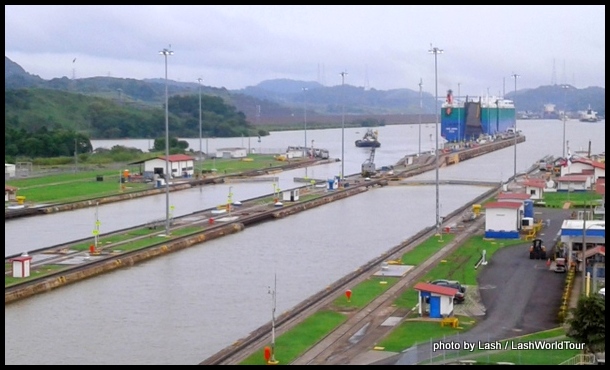
world famous Panama Canal
8 Things Distinctive to Panama
Unlike Costa Rica, where I couldn’t see anything distinctively Costa Rican for weeks and weeks after my arrival, in Panama I started seeing clear differences immediately. As soon as I crossed the border into Panama and took my first bus, the differences emerged.
That bus driver was driving like a maniac, in great contrast to the careful, patient Costa Rican drivers. Luckily, he was just a fluke (pumped up on drugs of some sort, I’d venture to guess from his driving and other behaviors) because I soon found most Panamanian bus drivers much more careful.
But aside from the maniac, the bus was icy cold from air-conditioning, a first for me in Central America. And very loud, crappy music was pumping through the bus as well. It was a nightmare on wheels, in other words.
In great contrast, buses in Costa Rica make use of open windows and breeze to keep things cool rather than a/c. They also are generally quiet, without music or movies blasting through the aisles.
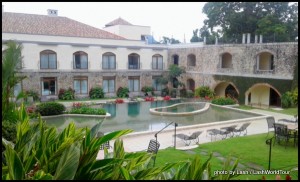 I soon learned how much Panamanians love super cold air-conditioning as well as their great fondness for loud radio, complete with super obnoxious readio djs. Quite unfortunately for me, I was bombarded with these awful djs and music nearly every time I rode a bus in Panama, as well as in some stores and restaurants. Yikes
I soon learned how much Panamanians love super cold air-conditioning as well as their great fondness for loud radio, complete with super obnoxious readio djs. Quite unfortunately for me, I was bombarded with these awful djs and music nearly every time I rode a bus in Panama, as well as in some stores and restaurants. Yikes
The next thing I noticed in Panama were the indigenous people walking around in David city, all decked out in their traditional attire. Women were wearing long, loose-fitting solid-colored dresses with a bit of fancy trim. Men generally were dressed in western attire.
As I continued traveling around the country, I kept seeing indigenous people in many towns and cities, though different tribes are present in different areas of Panama.
At this point, I’ve been exploring the country for well over one month now, and the things I first noticed when I arrived, I continue experiencing all over Panama. So I can say they are distinctive to the country, rather than just one-off experiences.
Here are eight things I’ve found to be distinctive to Panama, differentiating it from the other countries of Central America.
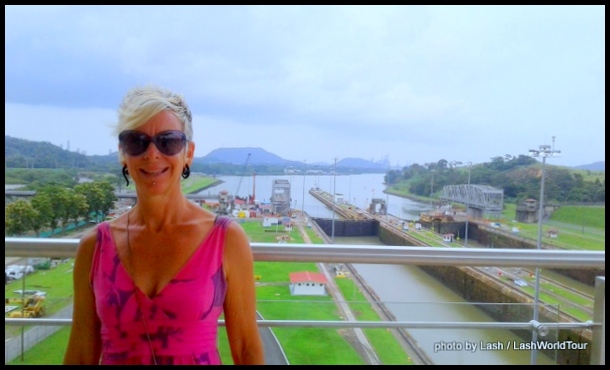
at the Panama Canal – 2018
1. Panama Canal
Needless to say, the world-renowned Panama Canal is this country’s most distinctive feature. As one of the world’s greatest engineering feats, the canal is magnificent to view. It’s also very interesting to learn about its construction and subsequent management at two main museums featuring the canal.
There are several ways to visit and learn about the canal, including visiting one, two or three of the canal locks; exploring the museums; taking a tour that goes through part of the canal or even passing through the entire canal on a yacht.
Despite the canal being a huge tourist draw, it’s most definitely worth visiting.
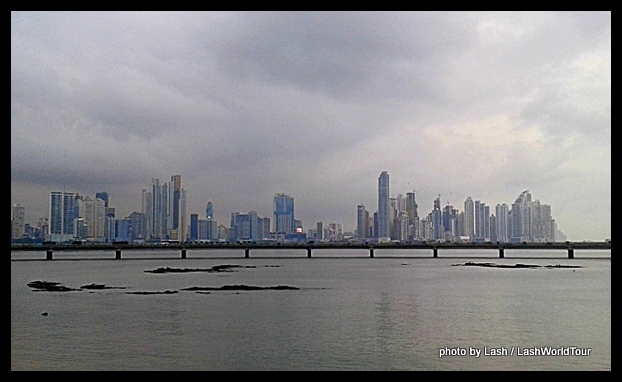 2. Panama City Sky Scrapers
2. Panama City Sky Scrapers
This is the only city south of the USA that has a sky full of modern skyscrapers! Not one single city in all of Central America has anything like it! Not even Mexico, with its dozens and dozens of huge cities, has a city filled with gleaming modern towers. Most of Mexico’s cities and towns consist primarily of a beautiful historic, Spanish-built colonial center and then low-lying city sprawl leading out from there.
So Panama City is quite a unique place in this region of the world.
I happen to love skyscrapers. And Panama has some really gorgeous, cool modern designs for their most recently built towers. There’s the super-cool spiral tower and the Ocean Club Tower (formerly known as Trump Tower) that’s shaped like a yacht sail, imitating the famous Sails Hotel in Dubai.
There’s the 70-story silver and gold glass BICSA Tower, which houses the amazing Hilton Hotel as well as some offices and a casino. Then there’s the super-cool W Hotel building and a few other great towers, which are mostly financial companies.
Even better, the soaring towers stand along a line backing a leafy green coastal park beside the pacific Ocean, making city views even more spectacular.
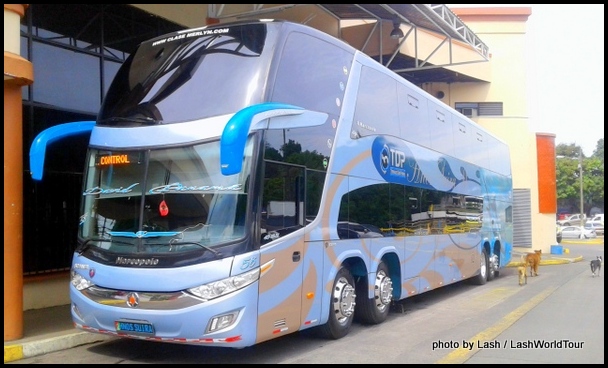 3. Cold Air Conditioning
3. Cold Air Conditioning
Panamanians seem to LOVE air-conditioning! Cold air-conditioning. They have it blasting just about everywhere. In buses, hotels, office towers, Panama city’s subway, shopping malls, cinemas, and even in the dorm rooms of hostels at night!
Sheesh, I don’t remember experiencing this type of frigid a/c since riding the ultra modern buses & trains in Malaysia and Singapore!
Using air conditioning might seem to make sense here, considering that Panama is a tropical country situated just 7 degrees north of the equator and with an elevation near sea level in most places.
However, Costa Rica is located just north of Panama, yet the Ticos rarely use air-conditioning. Certainly not on most buses. Nor in most restaurants, shops or cafes, which are usually open-aired. Even luxury resorts in Costa Rica tend to have open-air lobbies and facilities, reserving air-conditioning for guest rooms, for visitors who care to turn it on.
In fact now that I’ve traveled extensively through every country in Central America, I can confirm that I haven’t come across this much air-conditioning anywhere in Central America! The last place I remember cold a/c in this region of the world is at a few places in Mexico – on some long-distance buses and at some upscale restaurants or hotels. But even there, they tend to set it at less frigid temperatures.
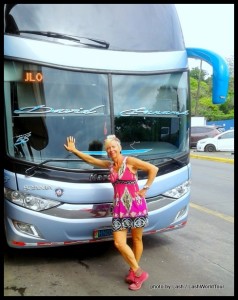
heading on a road trip in Panama on their ultra plush buses
4. Loud Radios with Obnoxious Djs
In Costa Rica, I had become accustomed to generally quiet buses, devoid of blasting music or movies. So it came as a shock when I rode my first mini-bus in Panama, from the border down to David city.
Wow! They had the volume turned up high. And of course they were playing some crappy pop music and reggaeton, which I hate the most. Lol
Quite unfortunately, not only was it crappy loud music, but it was the radio. Even worse! In addition to the awful music I had to put up with tons of inane commercials and what must be the world’s most obnoxious radio djs!
Wow, those guys are super loud and super annoying. They just love yelling in the middle of songs, cutting songs short to skip to the next one, making never-ending useless and stupid comments, and generally being as annoying as hell.
I have absolutely no idea how – or why – Panamanians can even put it on, let alone let it play as ‘background’ noise. But they just seem to love it.
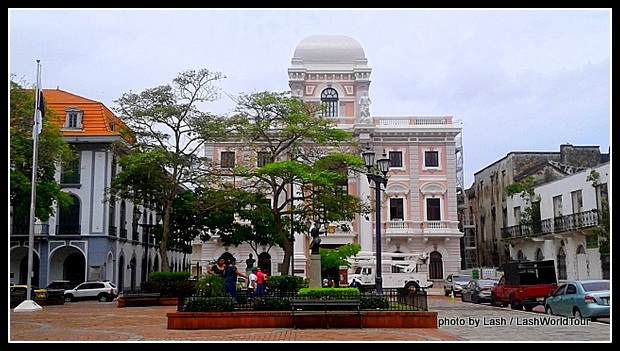
5. Presence of Indigenous Tribes
As I mentioned above, various indigenous tribes have a strong presence in Panama. In the northwestern Chiriqui province, the Ngobe live in David, Boquete and more rural areas.
Around Panama City, the canal, the central Caribbean coast and the remote San Blas Islands, the Kuna Yala people still make up a large part of the population.
These tribes are unique to Panama and there are several other tribes in more remote regions of the country.
6. A large Jewish population
In Panama City there’s a rather large Jewish community, with its synogoues, kosher food stores and restaurants and residential areas.
This is something quite particular to Panama City, and in Central America, peculiar to the region.
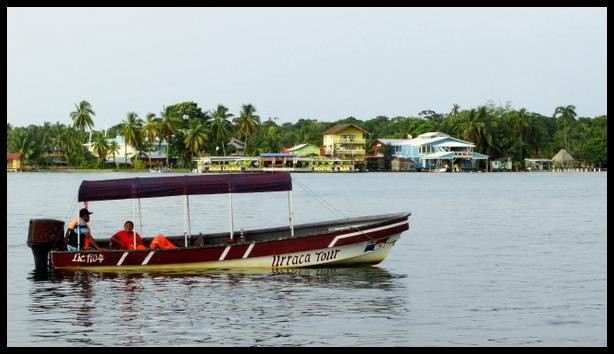
Bocas del Toro Islands – Caribbean coast of Panama
7. A huge melting pot of cultures
All the countries of Central America are to some extent melting pots of several cultures. They all have native indian tribes, Spanish descendents and some Afro-Caribbean peoples.
But Panama has a much larger mix of cultures, which is also much more apparent in daily life.
As noted, there’s a strong presence of various indigenous people throughout the country. In Panama City, a large Jewish population.
There’s also a large Chinese community, a huge population of Jamaican descendants and other Caribbean islanders, Creole culture along the northeast Caribbean coast, a large group of Venezuelans who’ve escaped the current regime, a large community of western expats, the usual Spanish descendants, and Latin foreigners working in Panama from all neighboring countries in South & Central America.
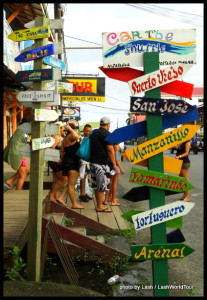
signs at Bocas del Toro
8. The use of incense
This is really random, but…
In David, at the very first hostel I stayed at, I was quite surprised that the hosts used incense sticks throughout the house. I had not seen or smelled incense anywhere else in Central America, so its presence was quite noticeable.
I thought it was probably a one-off, some quirk of the owners, until I found incense in use at many other hostels and hotels around the country. Then I started noticing it for sale in many little shops and super markets.
In SE Asian countries, incense is very common. It’s used at Buddhist & Hindu temples and can be found at most shops all over the region. But I have not seen it in use in Central America until I reached Panama.
I’m not sure why or how incense came to Panama, but it’s certainly in wide use there now.
=========================================
In any event, these are the main things that popped out at me while I traveled around Panama, which I noticed as being quite different from other countries of Central America.
If you’ve traveled in this region, have you noticed any other distinctly Panamanian things? Share them here!
You might also find these articles interesting-
9 Things Distinctly Costa Rican
13 Things Distinctly Nicaraguan
==================================================================










 Hi! I'm Lash, an American nomadic world traveler who's been traveling solo since 1998. I’m passionate about traveling the world nomadically and then sharing it all with you. I hope to inspire you to travel the world, to entertain you with tales from the road, and to help you reach your travel dreams. Welcome!
Hi! I'm Lash, an American nomadic world traveler who's been traveling solo since 1998. I’m passionate about traveling the world nomadically and then sharing it all with you. I hope to inspire you to travel the world, to entertain you with tales from the road, and to help you reach your travel dreams. Welcome! 



